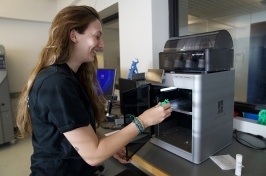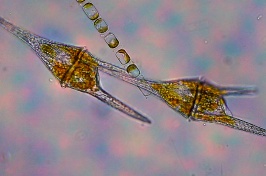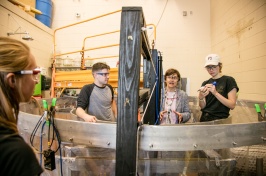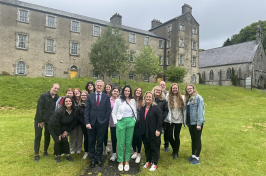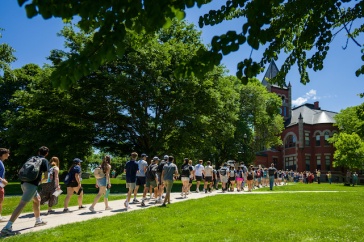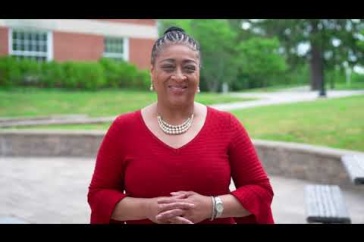
When students in “The Lost Campus: The Archeology of UNH,” a Discovery Program Inquiry course, began searching the university archives recently for potential dig sites, they were dismayed to find that so many locations of interest are covered with buildings or parking lots. One site—an expanse of lawn adjacent to the MUB where two World War I barracks-turned-dorms once stood—is surprisingly open. The explanation can be found on a bronze plaque affixed to a boulder in the middle of the green.
The dorms, called East and West Halls, had become dilapidated by 1971 and were demolished. The area, on the east side of the MUB along Quad Way, was slated to become a 65-car, split-level, asphalt parking lot. Students objected, saying the need for a green, open area on that end of campus outweighed the need for more parking. In March 1972, Marcia Powers ‘73 and Joan Gray ’73 organized the group “Students for a Park,” and initiated letter-writing campaigns, public hearings and petitions to convince the administration to develop a park instead. Students for a Park held a Spread-the-Loam day (photo) that attracted 250 workers who cleared debris, spread dirt and planted grass to prevent erosion while they explored landscaping options. And they began fundraising, too, reaching out to students, faculty, staff, alumni and the Durham community. After Powers and Gray graduated, others kept the momentum going until the group was able to finally celebrate, on May 12, 1974, the formal dedication of East-West Park—a patch of green space, instead of pavement, that remains to this day.
Originally published by:
UNH Today
Written by Mylinda Woodward ’97
-
Written By:
Mylinda Woodward '97 | University Archives | mylinda.woodward@unh.edu | 603-862-1081















